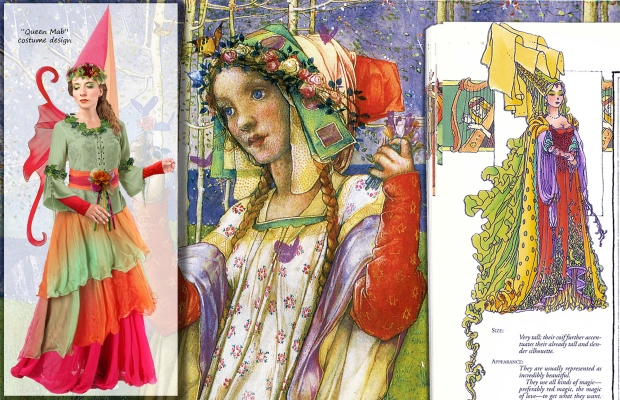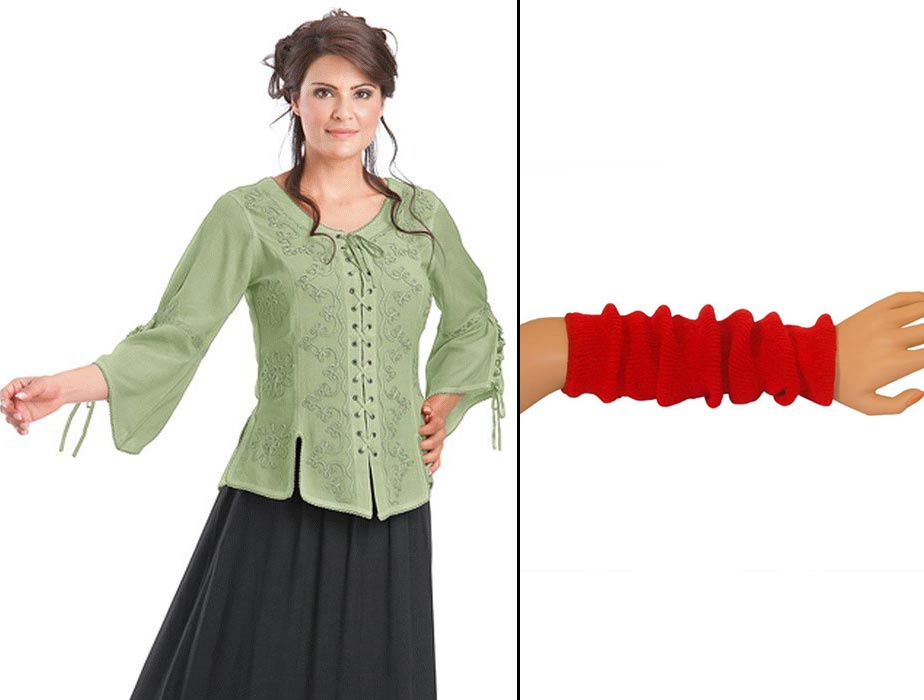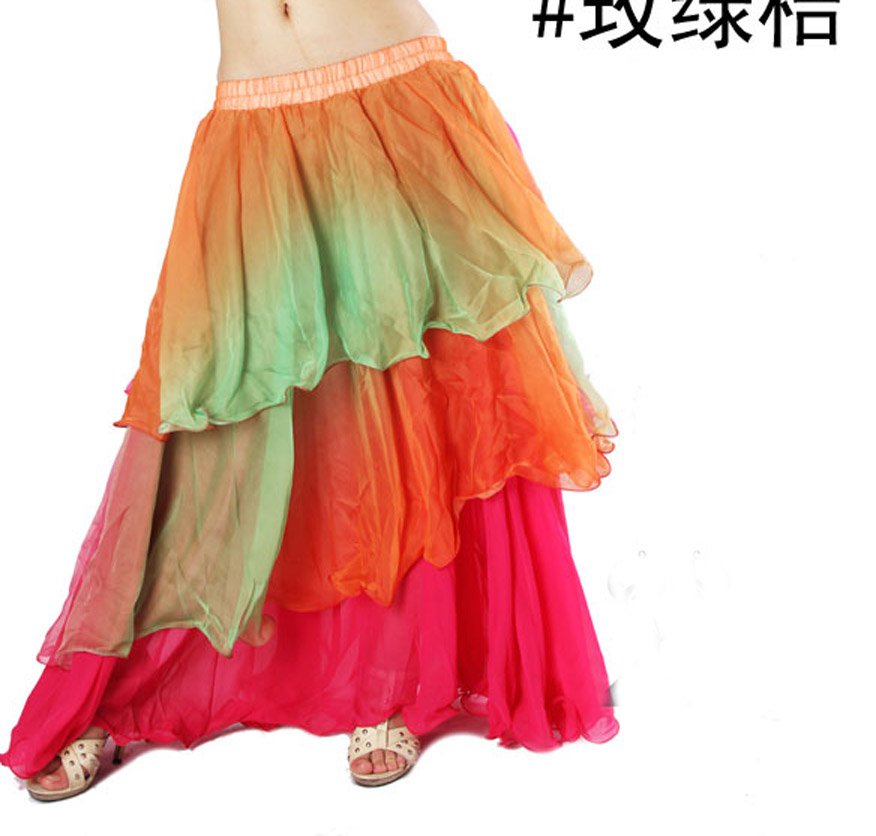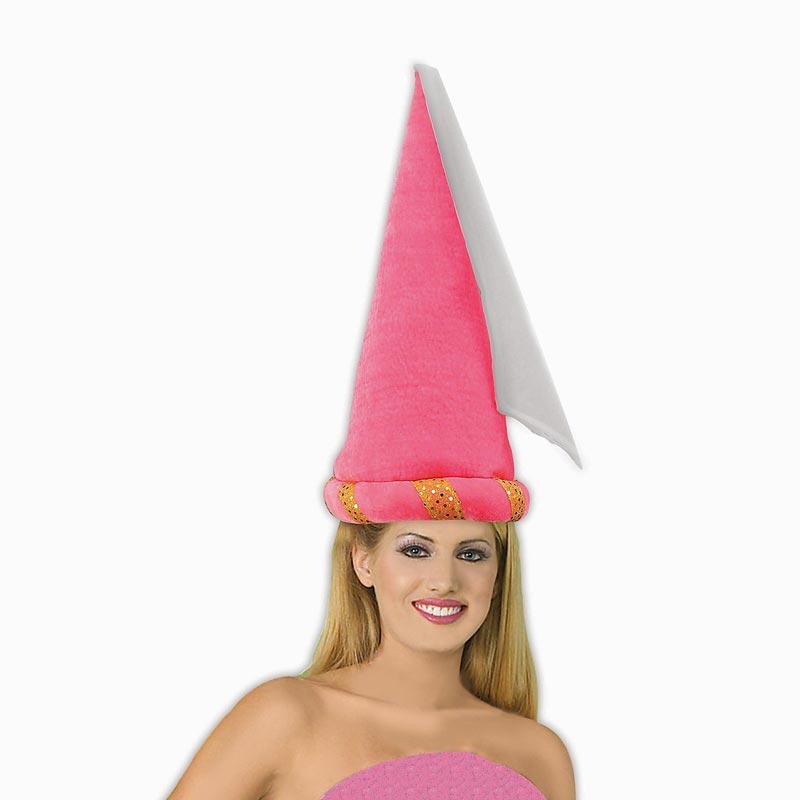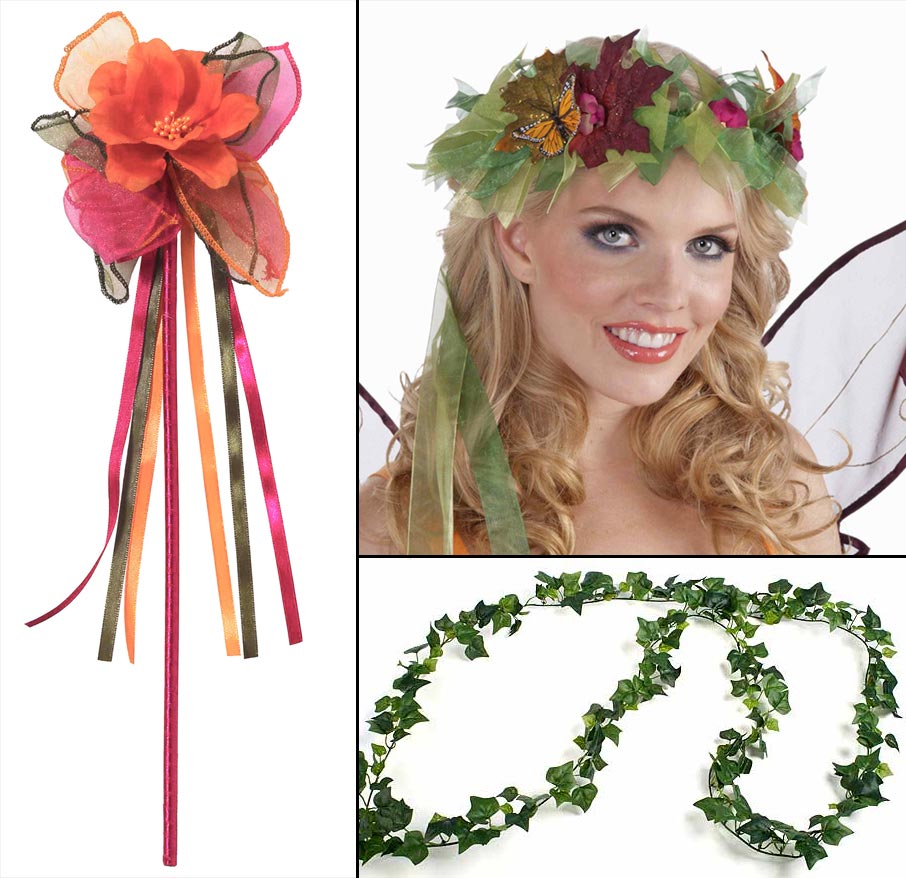Queen Mab isn’t just a fairy. She’s a fairy queen, presiding over dreamland, drawn in state by a fairy coach, trailed by attendants and servants. She makes her literary debut in Romeo and Juliet, when Mercutio erupts into a fanciful speech about Queen Mab as the ruler of dreams. Her real origin is obscure, since nobody has been able to find a clear reference before Shakespeare. The name “Mab” is Welsh, and may represent an echo of pre-Christian Celtic mythology. In Ireland the great goddess Medb was transformed into the legendary Queen Medb, cattle thief extraordinaire. It’s quite possible that the same Celtic goddess underwent a similar downsizing in Wales—except instead of becoming a mortal queen, she became a fairy. Whatever the case, it’s likely that Shakespeare was drawing on existing tradition in the folklore of the British Isles.
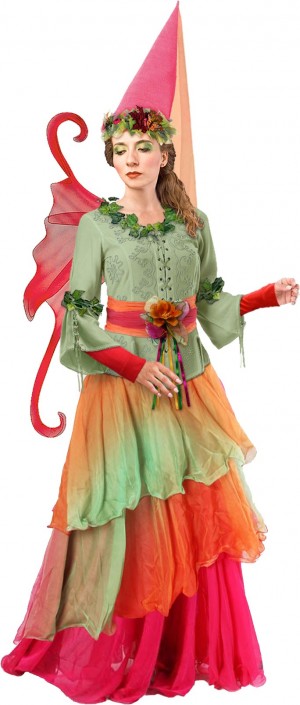 For the costume, we imagined Mab in a medieval ensemble that would have seemed exotic, fantastical, and archaic even in Shakespeare’s day. It looks complicated, but it’s really just a matter of layering. The items we suggest, from left to right:
For the costume, we imagined Mab in a medieval ensemble that would have seemed exotic, fantastical, and archaic even in Shakespeare’s day. It looks complicated, but it’s really just a matter of layering. The items we suggest, from left to right:
1. Holy Clothing Miranda top in sage layered over bright red arm warmers. If the Miranda top is no longer available, the Trinity top is similar.
2. Three-layer skirt in pink/green/orange. The skirt we originally used for this costume was called a “three tier color fusion,” and it doesn’t seem to be readily available anymore. You can still get solid color versions at Belly Dance Digs.
3. Large red fairy wings. These are adult wings, not kid size, and they’re sometimes sold as “fantasy” wings or even devil wings, though they’re really not. They don’t have feathers; they’re supposed to look more like insect wings (organza stretched over wire). You can also look for butterfly or tinkerbell wings, like these.
4. Pink “princess hat” (hennin). This hat is about 16 inches tall, so it’s not quite as huge as it looks in that rather weird picture from the product vendor. The veil that comes attached is kind of dinky, so we suggest you replace it with a yard of chiffon (next). Just pin it to the tip of the cone.
5. One yard each of peach chiffon, fuchsia chiffon, and tangerine chiffon. Pin the peach chiffon to your hat as a veil. Wrap the fuschia and tangerine chiffons around your waist as a two-tone sash.
6. Autumn fairy wreath, autumn fairy wand, and English Ivy garland. Fit the wreath around the base of your hat. Pull the flower/ribbon arrangement off the wand and pin it to the front of your sash. Pin the English Ivy around your neckline, sleeves, and wherever you need some greenery.
More on the headgear situation: The only tricky thing about the costume is keeping the hat on your head at a backwards slant, which is how it should be worn. Good old-fashioned hatpins will work as long as you have enough hair and you’re not planning on doing handstands. An alternate approach is to pin a couple of sheer ribbons to the hat and tie them under your chin.
As for the veil, just pick up the yard of chiffon from the center—like a napkin or handkerchief—and pin it to the top of the cone. It will drape very prettily. There’s no need to hem the chiffon, but the edges will definitely fray a little bit. If that bothers you, you can seal them with Fray Check.
Main illustration credits: The large painting is Fairyland (1906) by Edward Reginald Frampton. The image on the right is a page from The Great Encyclopedia of Faeries by Pierre Dubois, published in 1996, with illustrations by Claudine and Roland Sabatier. The figure wearing the hennin is an Enchantress, whom Dubois describes as a regal fairy-like being often connected with Celtic mythology on the Continent.

